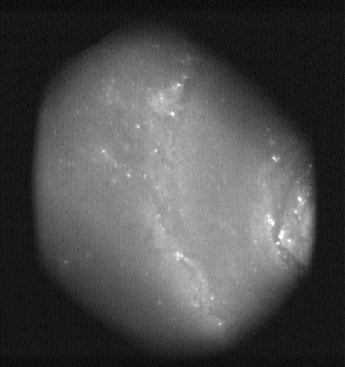
Stock image, Claudio Ventrella
Have you ever tried to take a picture of a bright full moon or a star-filled sky, only to be disappointed when virtually nothing shows up on your phone screen? The distance and brightness of these objects make it nearly impossible to get a sharp image—and that’s just in our own galaxy.
Try multiplying that distance by a few million light years. Even with sophisticated equipment, astronomers struggle to capture all the data they want when imaging intergalactic objects. Recent technological advancements such as the Keck Cosmic Web Imager (KCWI) deployed at W. M. Keck Observatory in Hawaii, however, are paving the way for astronomical breakthroughs. Read on to learn how Ross Optical played a small part in the KCWI’s success.
Overcoming ‘Spatial’ Challenges
The KCWI spectrograph installed on Keck II, one of the observatory’s two 10-meter telescopes, provides a high level of sensitivity that makes it ideal for imaging in space. The instrument uses multispectral imaging to create a three-dimensional stack of images for the object being photographed. Each image shows the object as it appears at a different wavelength band, such as infrared or ultraviolet. Its impressive spectral and spatial resolution allow it to accurately detect slight changes in spectral color and capture high quality images of ultra-faint celestial bodies.
With this level of detail, scientists can determine other characteristics of the object, such as:
- temperature
- motion
- density
- mass
- distance
- chemical composition
Proper orientation of the telescope camera also plays a critical role in obtaining a clear image, which is where Ross comes in…
The Optics Behind the Images
A high tech instrument like KCWI is a sum of many cooperative optical elements and systems. One such system was a guider camera, a secondary imaging unit that helps track the position of an object in space to ensure a clear, sharp image. The Keck Observatory and Caltech teams who developed the KCWI needed a large-format lens that would help provide this pointing capability.
Matt Matuszewski, Instrument Scientist at Caltech, found Ross Optical online and contacted our team. Our engineers were able to suggest some large diameter lens options, and ultimately we supplied a 6” plano-convex lens. Matt explains the qualifications he was looking for, and how Ross Optical was able to meet those needs:
“In astronomy, we are frequently in searching for vendors who offer desirable optics at affordable cost. Ross Optical has a good collection of in-stock large lenses, which is what we needed; this allowed us to avoid a higher-cost custom solution with a long lead time. Working with a company that could provide a high quality coating with a short lead time was very useful.”
The coated optic, one of several optics used on the guider camera, is functioning as a field lens.
“What was important for us in this case were the size of the lens and the focal length of the lens; they affect the size of the field of view available to our guider camera. We also needed good throughput in the 650-1050 nm wavelength range. The optical material and Ross Optical optimized coating were ideal for this application. Additionally, as the lens is being used close to the telescope focal plane where the beams are very small, any surface or coating defects would impact performance. The delivered optic was very good in that respect,” Matt says.
Glimpsing Faraway Galaxies
KCWI is already making huge strides toward understanding what lies beyond Earth. The instrument achieved its “first light” on April 12, 2017, imaging more than 100 stars at the center of the Messier 3 globular cluster, a spherical collection of stars orbiting our galaxy, the Milky Way. It has since also imaged part of the M51 galaxy, or Whirlpool galaxy. Keck Observatory scientists hope these discoveries can eventually help them “understand and untangle the effects of dark matter in galaxy formation.”

North-East arm of the M51 (Whirlpool) galaxy as imaged by the KCWI guider camera.
Image courtesy of W.M. Keck Observatory
Ross Optical is pleased to have contributed a small part to the KCWI and to the scientific progress being made at Keck Observatory. To discuss your latest optical engineering challenge, contact Lisa Yang, Chief Technical Officer, at lisa@rossoptical.com.
Or check out our large diameter lenses (100mm+).




